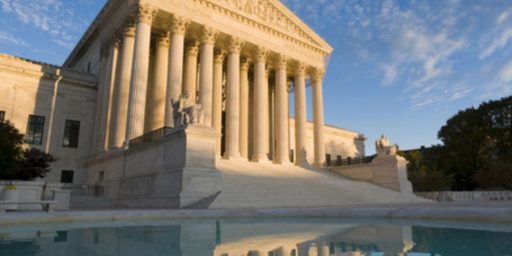Sandra Day O’Connor’s Legacy Quickly Undone
Dahlia Lithwick laments the speed at which Sandra Day O’Connor’s legacy on the Supreme Court has been undone.
During the final weeks of the Supreme Court term, it was hard not to be struck by one recurring theme: Former Justice Sandra Day O’Connor—a few short years ago the “most powerful woman in America,” a “majority of one,” the “most powerful person on the court,” and the most “powerful Supreme Court Justice in recent history“—had somehow become the most disregarded. With the court’s newly dominant conservative wing focused pretty much on whether to ignore or overrule her outright, it’s clear that one real casualty of the new Roberts Court is O’Connor’s lifetime of work on an extraordinary range of constitutional issues.
What can we conclude about the court’s swing voters, about O’Connor herself, or about the Roberts Court, from the speed with which her legal legacy is being dismantled?
So far, the court has explicitly minimized—or, more frequently, stepped distastefully over—O’Connor’s theoretical framework for abortion, campaign finance, and affirmative action. That’s to name just a few. My friend Marty Lederman predicted as much when O’Connor first retired two years ago; still, the speed of it all is proving to be unsettling, if not downright unseemly.
That’s the price, as Lithwick more-or-less acknowledges, of being a lightweight without a serious judicial philosophy. O’Connor was precisely what many of us feared Harriet Miers would have become had her nomination to the court been confirmed: A bright, decent woman who simply voted her conscience on each case rather than a serious constitutional scholar who could look past the immediate controversy. Miers would likely have reached decisions that conservatives were happy with, to be sure, but she would have simply represented a vote, not an addition to the intellectual heft of the Court.
Ronald Reagan had promised during the 1980 campaign to appoint a woman to the Supreme Court. He did this, mostly, to mollify critics of his opposition to the Equal Rights Amendment. The problem, however, was that there were very few women, indeed, with a resume fit for the job at the time and fewer still who were judicial conservatives. O’Connor had been a minor league politician and had served a few years as a state court judge in Arizona. While impressive enough for anything but a Supreme Court appointment, that hardly prepared her for a battle of wits with the likes of Lewis Powell or Harry Blackmun, much less William Rehnquist or Antonin Scalia.



EXCELLENT ARTICLE!!
I agree with 99% of your article. The other 1% is your reference to Lewis Powell, whom I consider the O’Connor of his day.